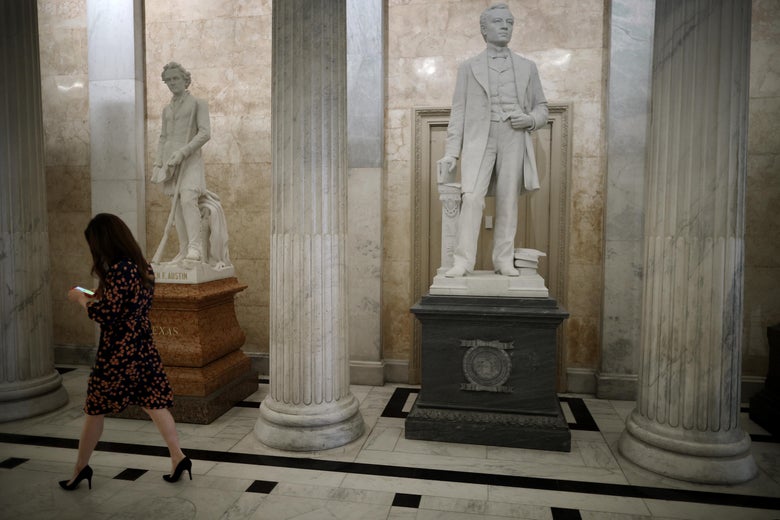
Congress voted Wednesday to remove Confederate statues from the Capitol as part of a broader national reckoning on symbols still present across the country commemorating the Confederacy. The legislation passed through the House with bipartisan support 305 to 113, including 72 GOP lawmakers joining a unified Democratic Party in voting for the statues’ removal, while 113 Republicans opposed the measure. While states and communities grapple with how to remove or contextualize statues in different parts of the country, the legislation targeted the iconography specifically in the Capitol and directed the removal of “all statues of individuals who voluntarily served the Confederate States of America.” The bill also specifically called for the removal of five statues, including a bust of former U.S. Chief Justice Roger Taney, who authored the odious majority decision in the 1857 Dred Scott case that defended slavery. The bill proposes replacing the Taney figure with a statue of Thurgood Marshall, the first Black Supreme Court justice. The measure comes shortly after House Speaker Nancy Pelosi ordered the removal last month of four portraits of former House speakers who served in the Confederacy from the Speaker’s Lobby outside the House chamber. Despite substantial Republican support in the House, the legislation faces predictable Mitch McConnell–led GOP opposition in the Senate. McConnell has insisted that decisions on the statues be left to the states. Under current federal law, statehouses, not members of Congress, have the authority to choose the statues sent to the National Statuary Hall collection. Each state is allowed to display two figures in the hall, which is frequented by thousands of visitors each day during normal times. “The history of this nation is so fraught with racial division, with hatred,” said Republican Rep. Paul Mitchell of Michigan, who supported the bill. “The only way to overcome that is to recognize that, acknowledge it for what it is.” Subscribe to the Slatest newsletter A daily email update of the stories you need to read right now. We encountered an issue signing you up. Please try again. Please enable javascript to use form. Email address: Send me updates about Slate special offers. By signing up, you agree to our Privacy Policy and Terms Sign Up Thanks for signing up! You can manage your newsletter subscriptions at any time. In addition to the Taney statue, the New York Times notes, “also targeted for removal are the statues of John C. Calhoun of South Carolina, the former vice president who led the pro-slavery faction in the Senate; John C. Breckinridge of Kentucky, a former vice president who served as the Confederate secretary of war and was expelled from the Senate for joining the Confederate Army; Charles Brantley Aycock, the former governor of North Carolina and an architect of a violent coup d’état in Wilmington led by white supremacists; and James Paul Clarke, a senator and governor of Arkansas who extolled the need to ‘preserve the white standards of civilization.’ ”
Comments
Post a Comment